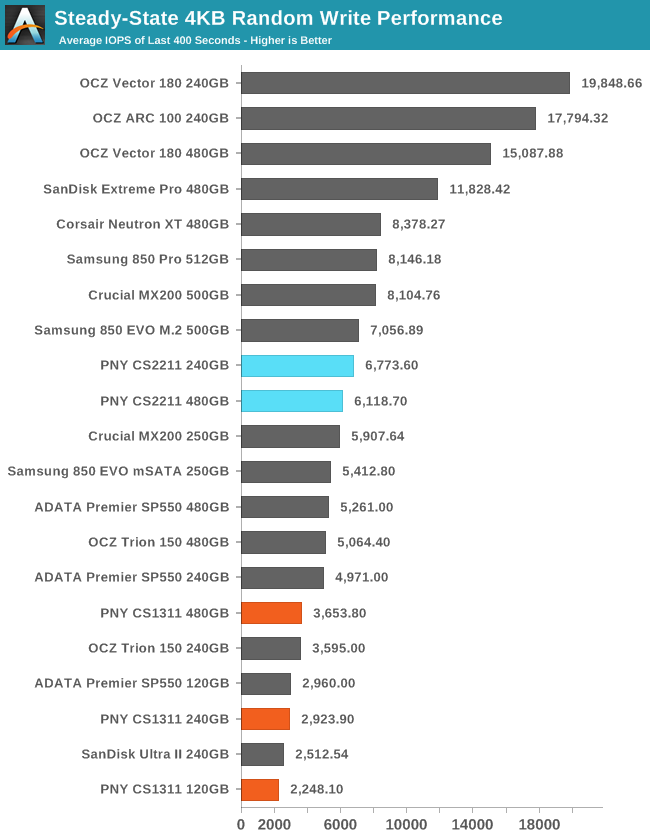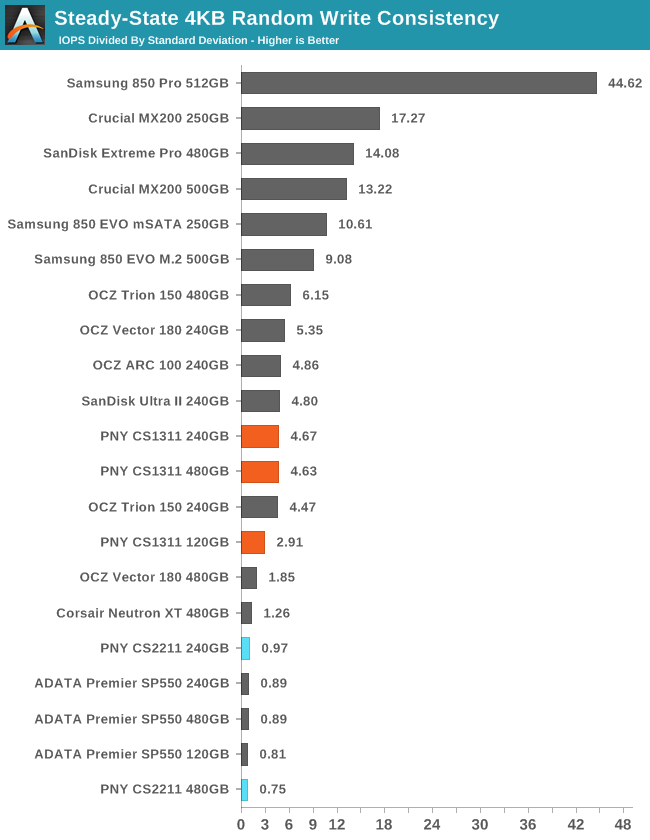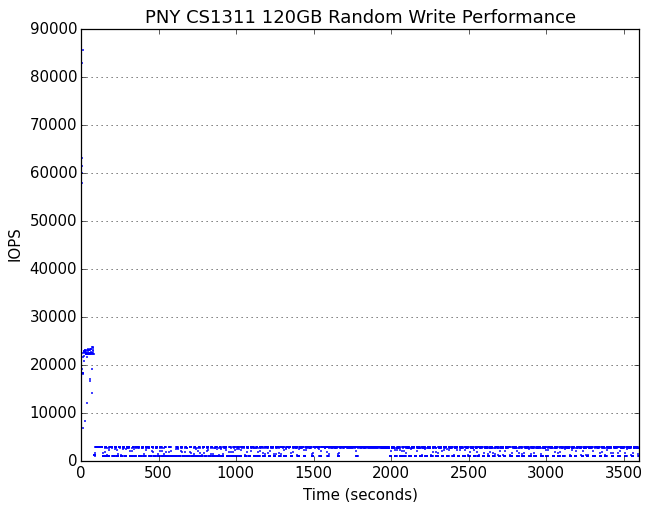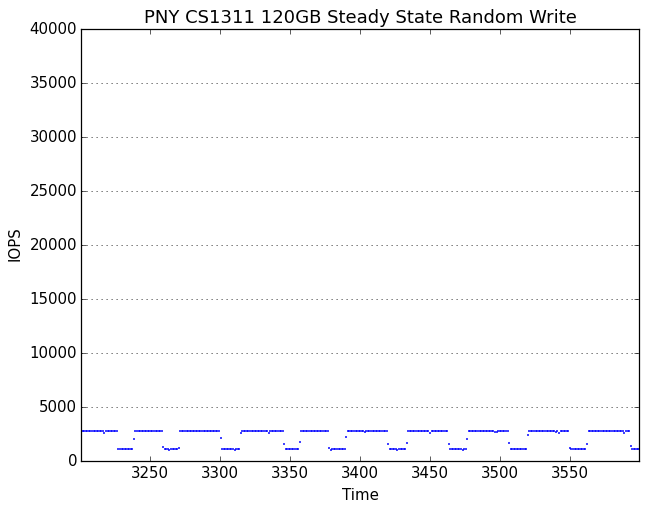The PNY CS1311 and CS2211 SSD Review: MLC vs TLC at 15nm
by Billy Tallis on April 15, 2016 8:00 AM ESTPerformance Consistency
Our performance consistency test explores the extent to which a drive can reliably sustain performance during a long-duration random write test. Specifications for consumer drives typically list peak performance numbers only attainable in ideal conditions. The performance in a worst-case scenario can be drastically different as over the course of a long test drives can run out of spare area, have to start performing garbage collection, and sometimes even reach power or thermal limits.
In addition to an overall decline in performance, a long test can show patterns in how performance varies on shorter timescales. Some drives will exhibit very little variance in performance from second to second, while others will show massive drops in performance during each garbage collection cycle but otherwise maintain good performance, and others show constantly wide variance. If a drive periodically slows to hard drive levels of performance, it may feel slow to use even if its overall average performance is very high.
To maximally stress the drive's controller and force it to perform garbage collection and wear leveling, this test conducts 4kB random writes with a queue depth of 32. The drive is filled before the start of the test, and the test duration is one hour. Any spare area will be exhausted early in the test and by the end of the hour even the largest drives with the most overprovisioning will have reached a steady state. We use the last 400 seconds of the test to score the drive both on steady-state average writes per second and on its performance divided by the standard deviation.

Among TLC drives, the ADATA SP550 and OCZ Trion 150 both soundly outperform the PNY CS1311 in sustained random writes. The PNY CS2211 performs well enough for a cheap MLC drive, but is also significantly behind the earlier Phison-based Neutron XT. The gap between the CS2211 and the CS1311 is clear, but there are other MLC and TLC drives blurring that line.

The CS1311's consistency score is decent despite the low overall random write performance. The CS2211 has a very low consistency score, indicating that there's a major difference in firmware between the two models. We would normally expect ongoing garbage collection to be easier for a MLC drive, especially one with as much spare area as a typical TLC drive.
 |
|||||||||
| Default | |||||||||
| 25% Over-Provisioning | |||||||||
The difference in behavior between the the CS1311 and CS2211 is very clear. The TLC-based CS1311 has the tight regulation of performance we saw on the OCZ Trion 150 while the MLC-based CS2211 behaves like earlier Phison-based drives by having a solid baseline with widely varying performance above that.
 |
|||||||||
| Default | |||||||||
| 25% Over-Provisioning | |||||||||
The 240GB CS1311 and 240GB Trion 150 alternate between the same two performance states, but the Trion 150 spends a far larger portion of its time in the higher performance state. At the 480GB capacity, the Trion 150's slower performance state is the CS1311's faster state.
The CS1311 responds better to overprovisioning than the CS2211, leading to the 480GB CS1311 providing a steady 10k IOPS while the CS2211 varies from 3k to 27k IOPS.










43 Comments
View All Comments